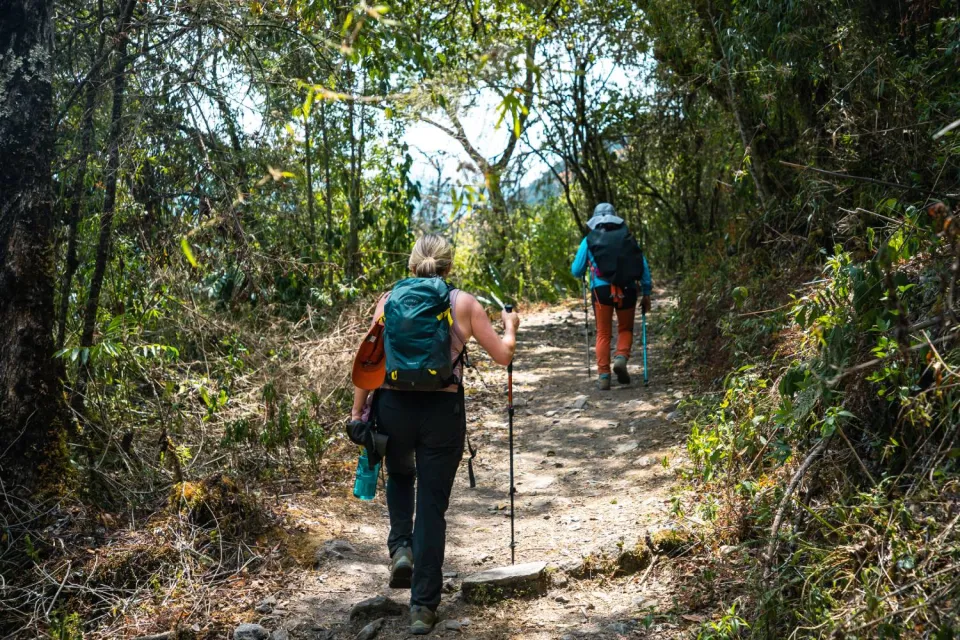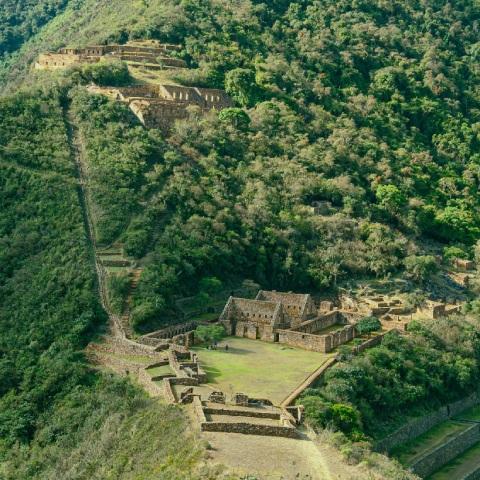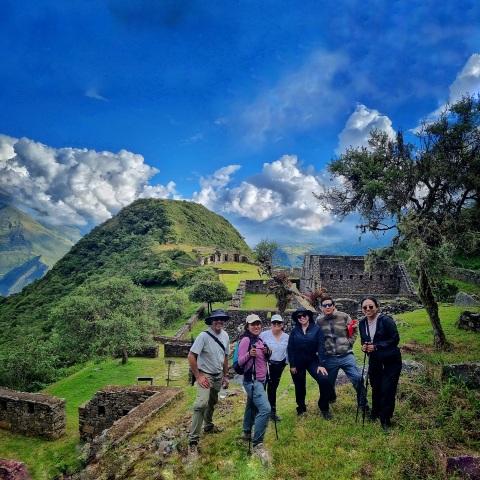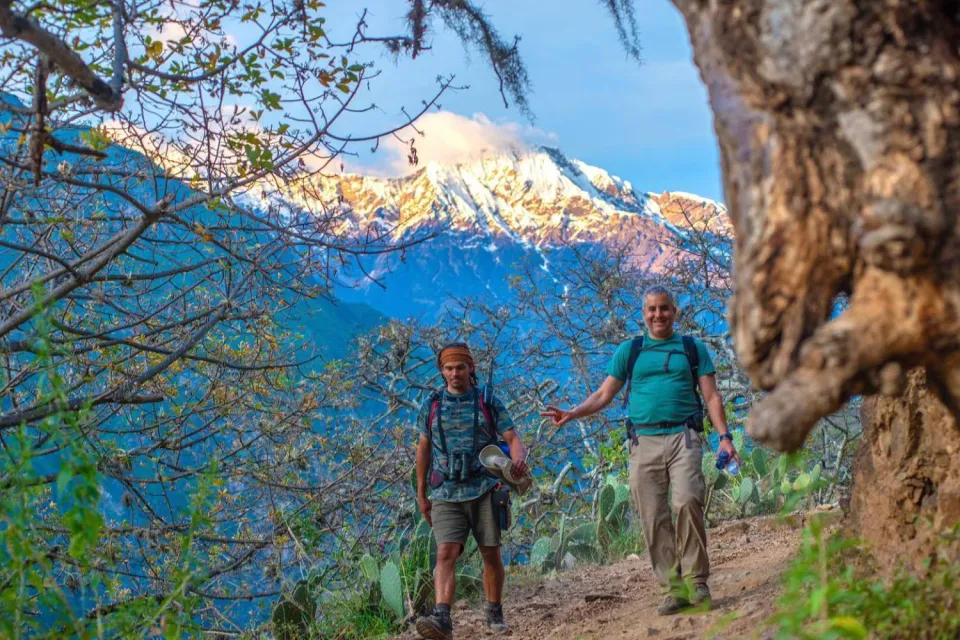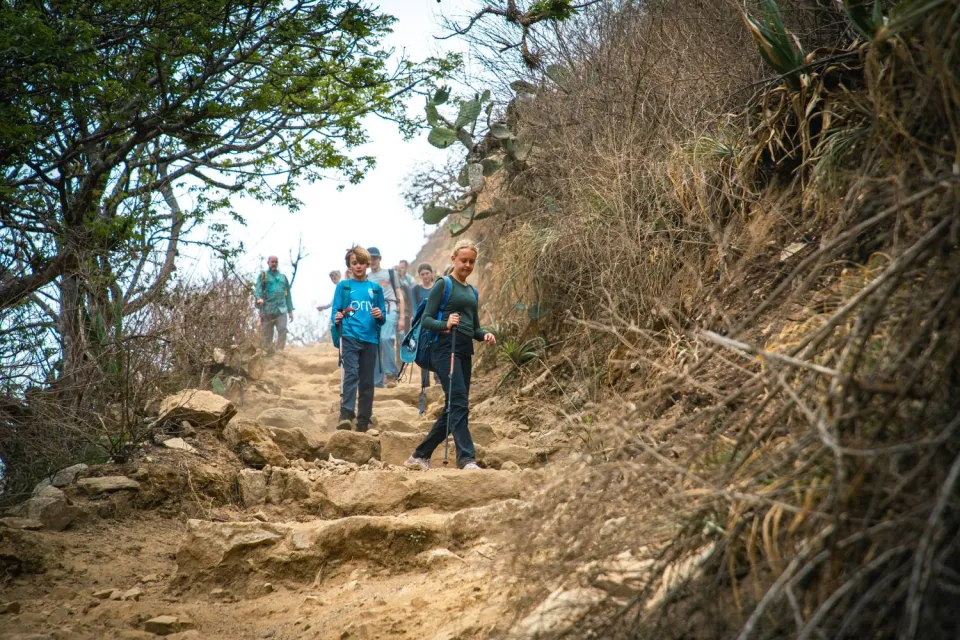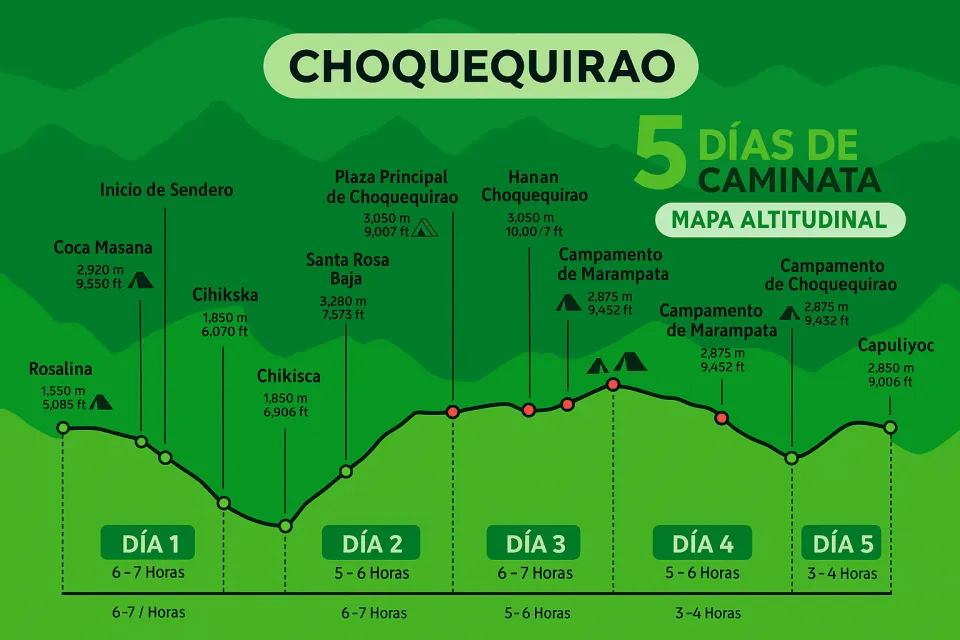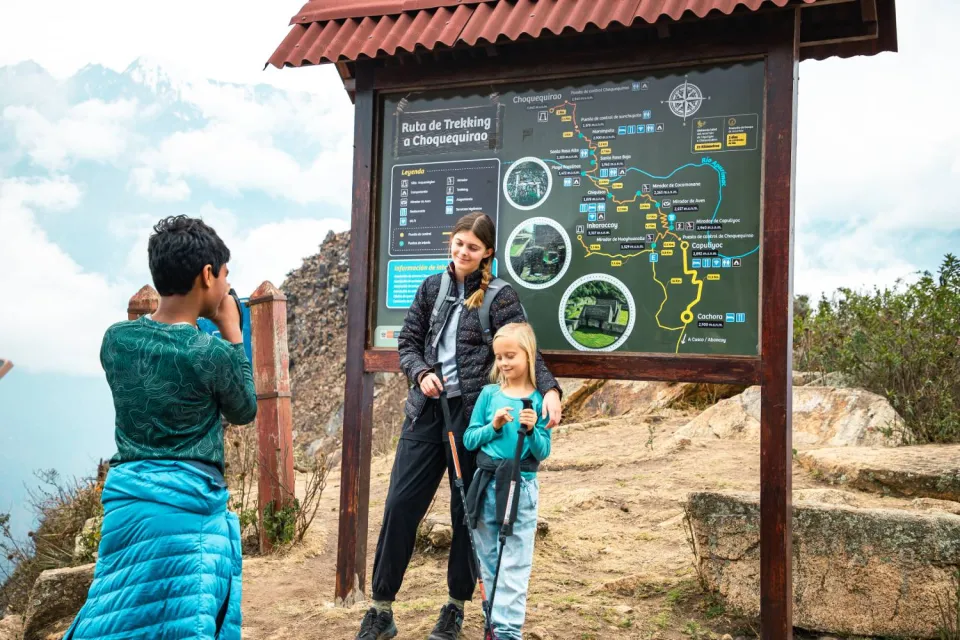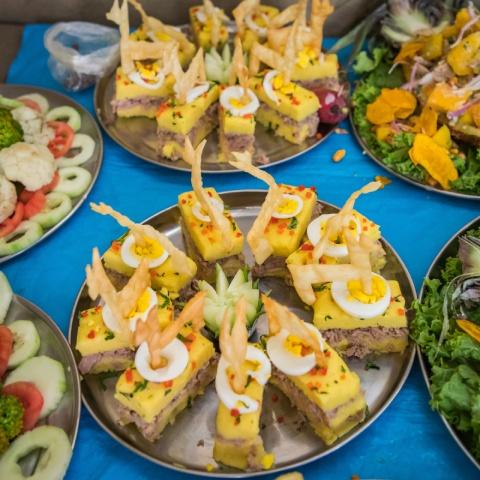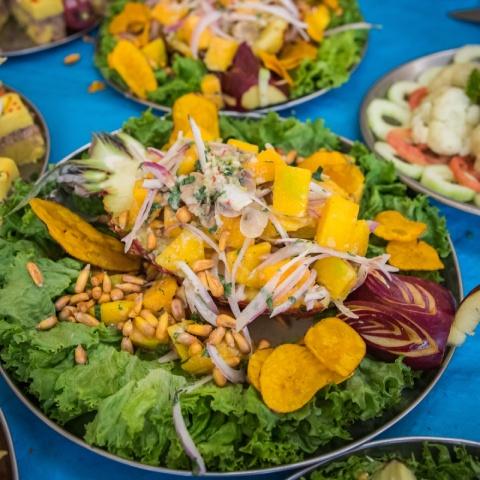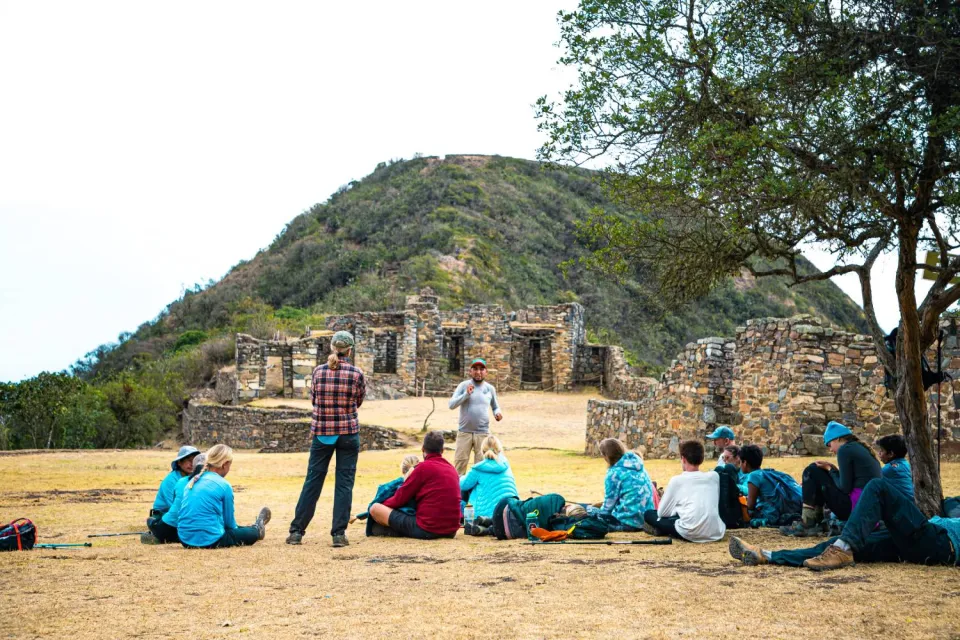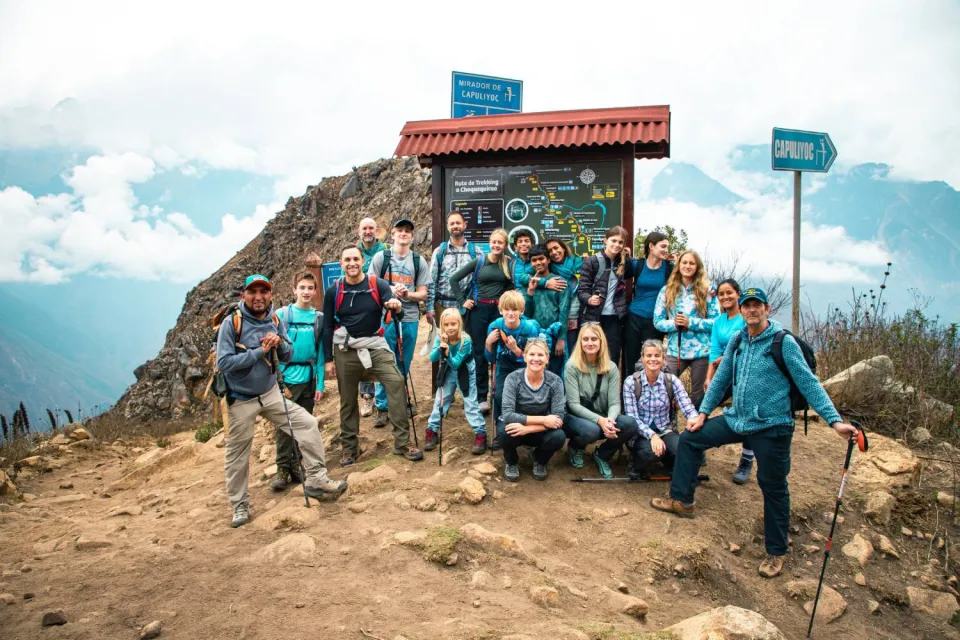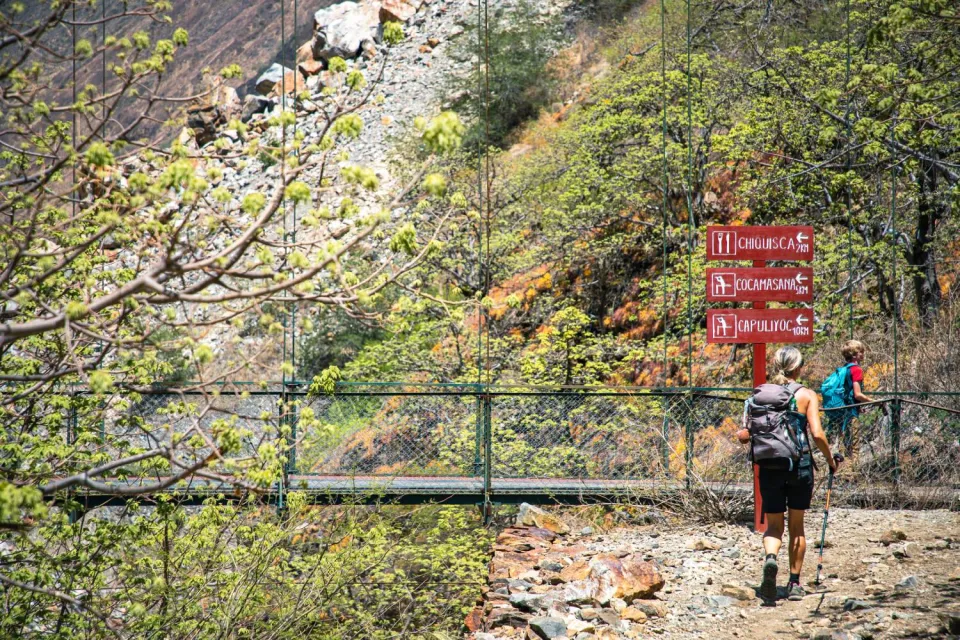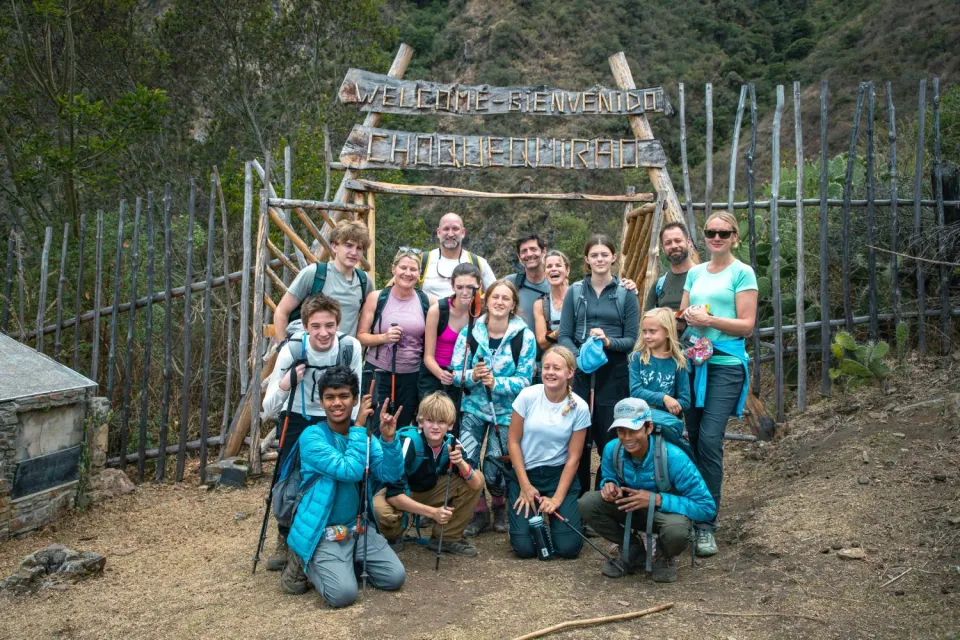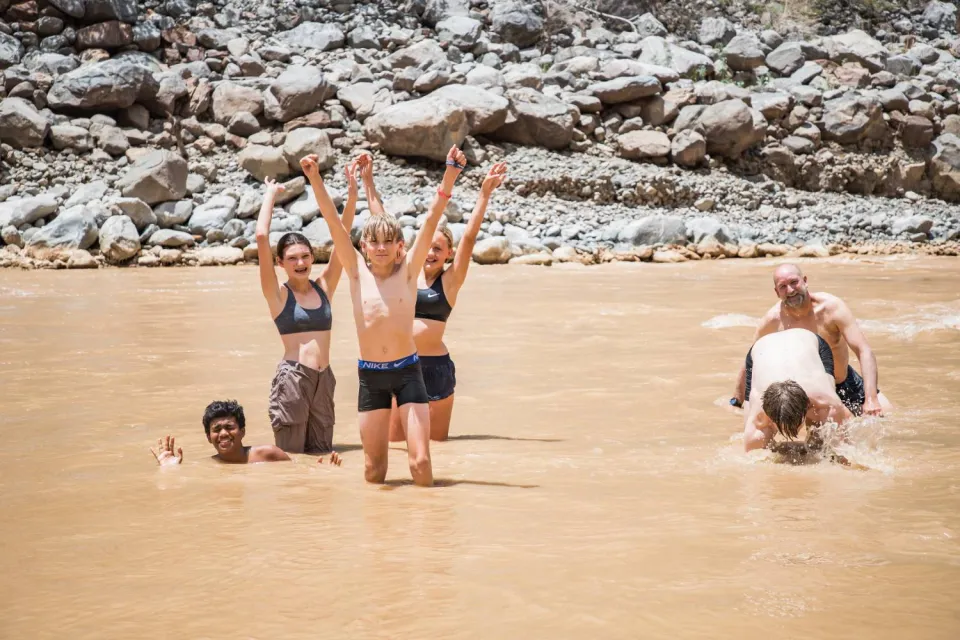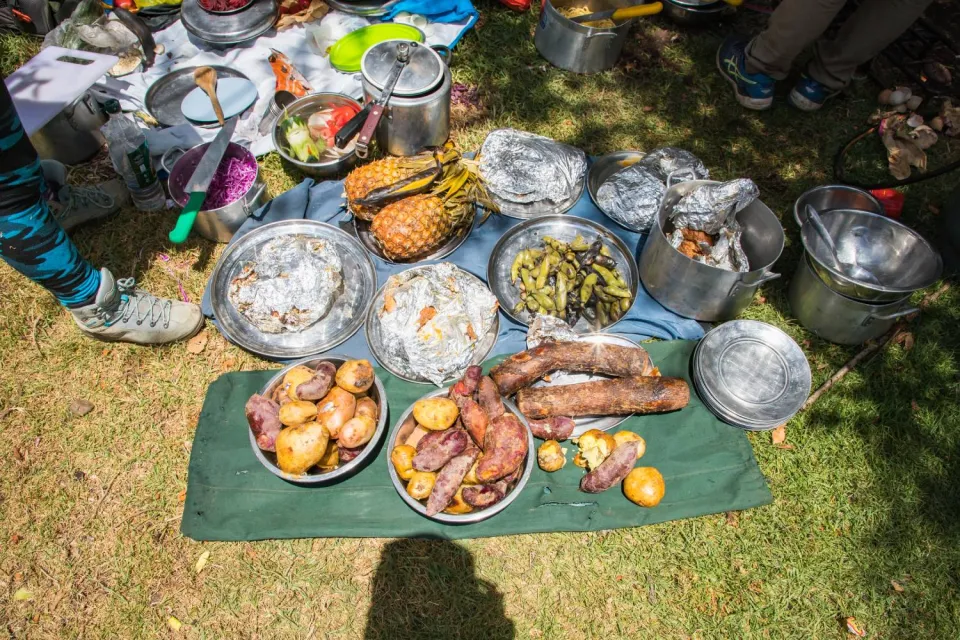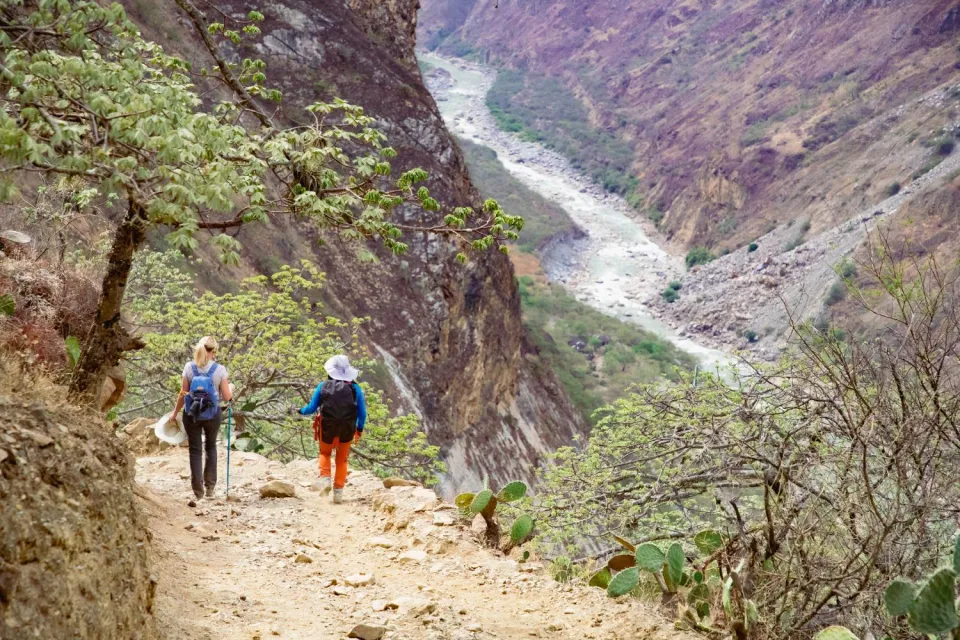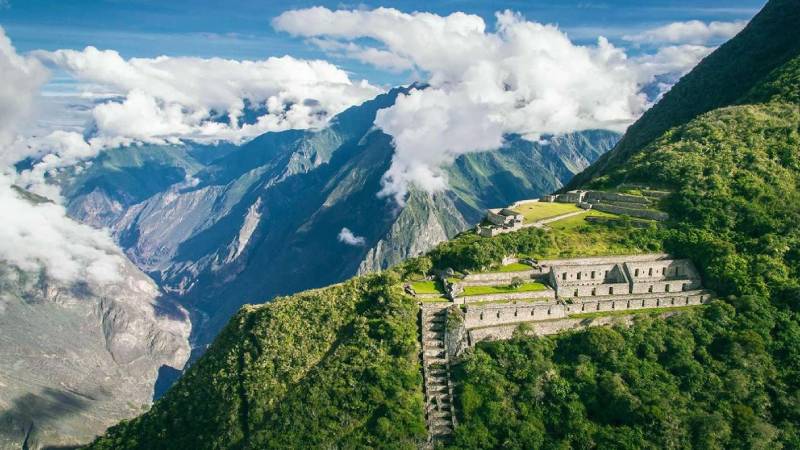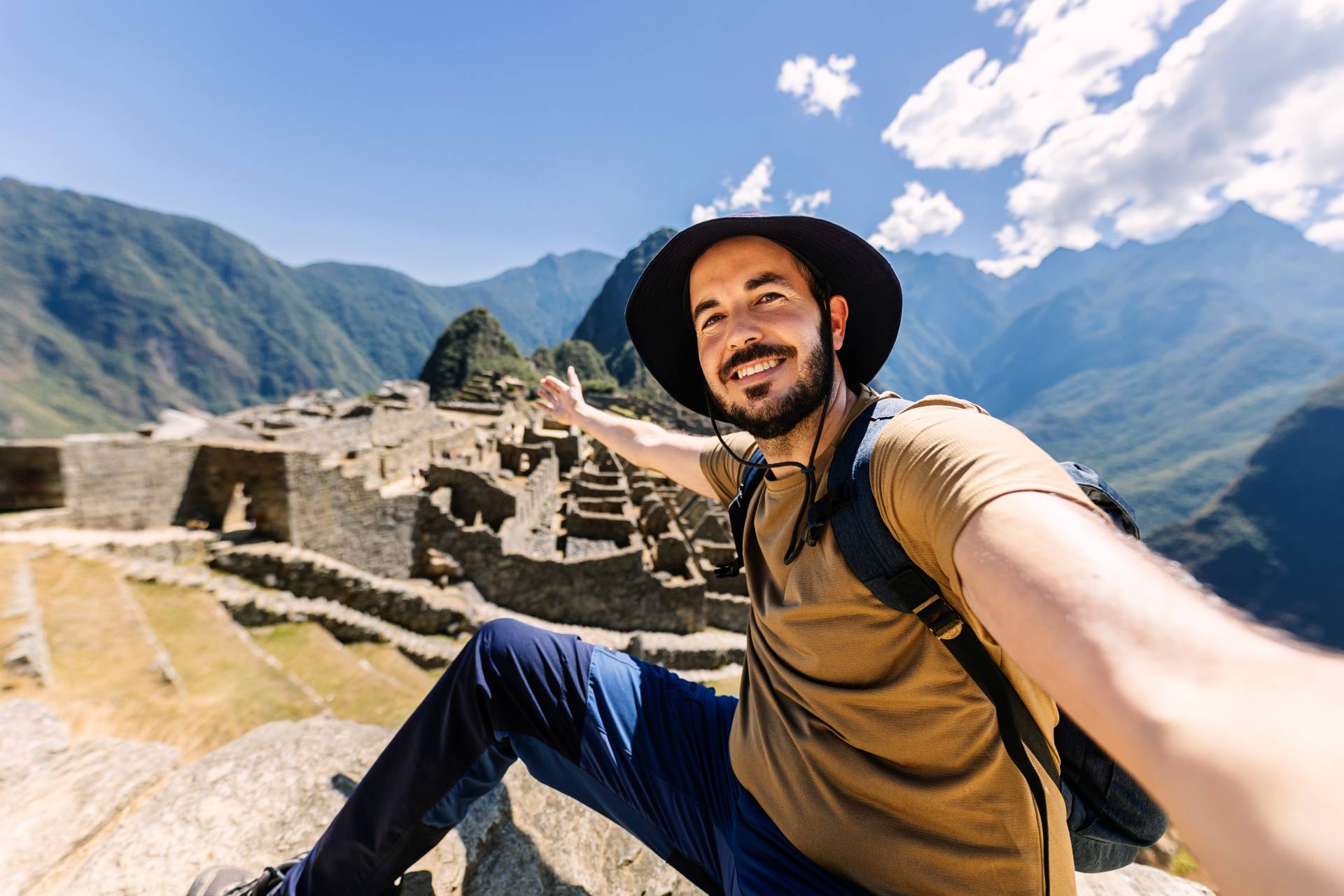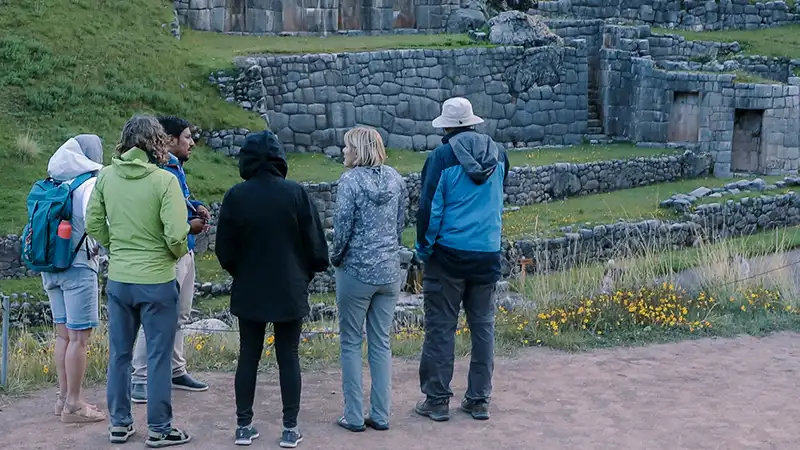There is an Inca citadel as imposing as Machu Picchu, but without tourists, without lines, without noise... and you can only reach it by walking several days through the jungle and the Andes. It is called Choquequirao, and the route to get there is as challenging as it is spectacular.
This Choquequirao trek is not for everyone. But if you are ready for a physical and spiritual challenge that few dare to face, read on. Because Choquequirao is not visited, it is conquered.
What is the Choquequirao Trek, Peru?
The Choquequirao Trek is a challenging multi-day trek that takes you to the majestic Inca citadel of Choquequirao, located on a remote mountain between the valleys of Cusco and Apurimac.
This route is ideal for travelers looking for an authentic experience, surrounded by nature, history and away from the crowds.
- Average duration: 4 to 9 days, depending on the route chosen.
- Total distance: between 60 and 100 km (round trip).
- Maximum altitude: around 3,050 m a.s.l. (in Choquequirao).
Why visit Choquequirao? The Sacred Sister of Machu Picchu
Choquequirao, although less known than Machu Picchu, offers an equally impressive and unique experience. Here we tell you why you should include it in your list of adventures:
It's a hidden archaeological gem
Choquequirao continues to be the subject of archaeological study, with new discoveries being made every year.
Located on top of a mountain, this citadel houses terraces, temples, canals, ceremonial plazas and Inca structures that reveal its historical importance. Walking along its paths is like stepping back in time.
An out-of-the-ordinary experience
Unlike Machu Picchu, where you can get there by train or bus, Choquequirao is only accessible on foot. This journey becomes a true adventure of exploration.
Along the way, you will be surrounded by pure nature, cross imposing canyons and contemplate some of the most spectacular mountains in the Andes.
Tranquility and authenticity guaranteed
Choquequirao does not suffer from tourist overcrowding. You can book your tour even a few weeks in advance without any problems.
When you arrive at the archaeological site, you will not find lines or crowds. You will be able to explore it calmly, without time limits or imposed routes, enjoying a silent and almost magical atmosphere, as if the place was just for you.
You contribute to responsible tourism
By choosing this destination, you support the sustainable development of local communities that depend on conscious tourism.
Your visit generates employment for guides, cooks, muleteers and family-run lodges, boosting a more equitable and environmentally friendly economy.
A destination at a lower altitude.
Choquequirao is one of the few trekking destinations in Cusco that is at a relatively low altitude. This means that, if you perform a proper acclimatization in Cusco before the trek, the altitude will not be a big problem during the trek.
Everything You Need to Know Before the Trek
Getting to Choquequirao is an out of the ordinary experience. Along the way you will cross breathtaking mountain views, diverse ecosystems and solitary trails.
Here we tell you everything you need to know before embarking on this wonderful adventure that begins in the city of Cusco.
Difficulty of the Choquequirao Trek: Is It Really That Difficult?
Yes, the Choquequirao Trek is considered difficult. However, the difficulty varies according to the length of the tour you choose. The shorter the itinerary, the more physically demanding it is.
These are some factors that increase the level of difficulty:
- Stretches of extreme ascents and descents.
- Trails with steep slopes, sharp turns and slippery sections.
- Hiking days of 6 to 9 hours per day.
- Varied climates: intense heat during the day and cold at night.
Not recommended for beginners with no previous trekking experience.
Best time of the year to do the Choquequirao Trek
The weather directly influences your experience during the trek. In Choquequirao there are two main seasons: the dry season and the rainy season. Both have different characteristics that you should be aware of.
Dry season (April to October)
During this season, the weather is mild with sunny days, clear skies and very little rain. Trails remain dry, with some dust, making them safer for hiking.
In the lower areas of the canyon, temperatures can exceed 37°C, although they are often accompanied by cool winds. At night, especially between May and August, temperatures drop to 0°C in the higher camps. At lower altitudes, the cold is less intense.
For these reasons, the dry season is the best time to do the Choquequirao Trek.
The most recommended months are May, June, September and November, since they offer good weather and few tourists.
Rainy season (November to March)
During this season, the vegetation is at its peak due to the rains, but the trail becomes more dangerous. You may have to walk in the rain, with muddy, slippery trails and risk of rockslides.
The weather is wetter and, for safety reasons, many agencies do not operate this route in months with heavy rains. In months with moderate rainfall, smaller groups are formed and additional safety equipment is used.
At Ultimate trekking, we prioritize your safety. If conditions are not optimal, we will cancel the trip and inform you in advance.
How many days do you need? Y Itinerary options
The duration of the Choquequirao Trek depends on your physical condition and the type of experience you are looking for. The most common options are:
- 3 days: Very demanding route, recommended only for people in excellent physical condition.
- 4 days: More balanced option, ideal if you have experience in trekking.
- 5 days: Recommended to enjoy the route without so much physical pressure.
There is also an extended version:
Choquequirao to Machu Picchu (6 days): It starts in Choquequirao and continues to Machu Picchu. It is ideal if you want to visit both archaeological sites that were key in the Inca Empire and that many consider the true “lost cities of the Incas”.
Distance and Altitude
The total distance of the classic trek to Choquequirao is approximately 32 km (20 miles) one way. Along the way you will pass through steep ascents and descents. Here is a summary of the most important altitudes:
| Point | Altitude (m a. s. l.) |
| Cachora | 2,900 |
| Apurimac River | 1,450 |
| Marampata | 2,900 |
| Choquequirao | 3,050 |
Routes to Choquequirao
There are 4 main routes to reach Choquequirao. Each one has different characteristics in terms of duration, difficulty and landscapes:
1. Classic route
This is the most used by agencies. It starts in Cachora, about 3 hours by car from Cusco. From there you walk to Capuliyoc and continue to Choquequirao.
- Duration: 4 to 5 days.
- Distance: 32 km approx.
- Level: Intermediate-high.
2. Route through Huanipaca
Less traveled and faster. It starts in Huanipaca, about 4 hours and 40 minutes from Cusco. From there you go to Tambobamba and then by vehicle to Kiuñalla, where the descent to the Apurimac River and the access to Choquequirao begins.
- Duration: 4 days.
- Distance: 64 km approx.
- Level: High.
3. Route through Mollepata
It starts in Mollepata, 3 hours from Cusco. It crosses the Salkantay pass, reaches the Santa Teresa river valley and then Yanama, to finally continue to Choquequirao.
- Duration: 5 days.
- Distance: 135 km approx.
- Level: High - ideal for experienced trekkers.
4. Choquequirao - Machu Picchu
It begins with the classic route to Choquequirao and then continues through Yanama and Santa Teresa to Machu Picchu.
- Duration: 6 to 9 days.
- Distance: variable according to the operator.
- Level: High - ideal for adventurers who wish to visit both archaeological sites.
Costs, logistics of the trek to choquequirao
How much does the trek to Choquequirao cost?
The cost depends on whether you do the trek with an agency or on your own.
With an agency
The price varies according to the itinerary, the size of the group and the services included.
- Average price: between USD $600 and $1050 for 4 or 5 days.
- Private trek: it is usually more expensive than the group trek, due to the customization of the itinerary and duration.
On your own
The cost depends on the route chosen and the type of accommodation along the way.
- Average cost: between USD $300 and $400.
- Includes: transportation, food, entrance fee to the archaeological site and, optionally, mule or muleteer service.
Tip: compare prices and check travelers' opinions before hiring an agency.
What does a guided tour include?
Most of the organized excursions include:
- Professional guide (1 guide for every 9 people)
- Camp chef
- Horsemen, porters and mules
- Duffel bag for personal luggage
- Transportation (round trip)
- Drinking water
- Complete meals
- Camping equipment (tent, mattress, etc.)
- First aid kit
- Entrance fee to the Choquequirao archaeological site.
Food
During the entire trek, the campsites have a chef who prepares fresh and delicious food, representative of Peruvian gastronomy. Some examples of dishes you can enjoy are: ceviche, causa limeña, pachamanca and many more.
Each day of the trek includes: breakfast, snack, lunch, another snack in the afternoon and dinner. To guarantee your well being, we carry purification tablets or filters that ensure that the water is safe for consumption.
Important: if you are vegan or gluten intolerant, please let us know at the time of booking. Our team will prepare a special diet for you.
Accommodations during the Choquequirao Trek
During the classic route of the Choquequirao Trek, you will spend the night in 4 camps. Each includes tents, tables, chairs, foam mats, pillows, towels and hot water bottles.
- Santa Rosa Baja (2,043 m. a.s.l.): first camp.
- Choquequirao base camp (2,836 m. a.s.l.): second camp.
- Marampata (2,897 m. a.s.l.): third camp.
- Cocamasana (2,286 m. a.s.l.): last camp.
Choquequirao Trek without guide or with guide?
Can I do the Choquequirao trek without a guide?
Yes, it is possible, but it is not recommended. Although the route is well marked, it is important to keep in mind:
- Carry a good map or GPS.
- Have experience in mountain trekking.
- Carry all the necessary equipment: tent, food, water, etc.
- Organize transportation to and from the trek.
- Buy the entrance fee to Choquequirao (60 soles).
- Be in good physical condition to carry your equipment.
Many travelers who do the trek on their own hire local muleteers or mules to carry their luggage. The average cost is USD $20 to $30 per day.
How is the Choquequirao trek with a guide?
With an authorized agency, you just need to enjoy the trail, the scenery and the experience. These are some of the advantages of trekking with a guide:
- Expert guides who accompany you, provide information and constant support.
- All logistics organized, including food, tents, transportation and entrance fees.
- First aid kit in case of emergency.
- Support with porters and mules that carry much of your luggage, allowing you to walk more comfortably.
How is Choquequirao trek: Day by Day
Day 1: Cusco - Chiquisca
- Starting altitude: 2,874 m (Cachora)
- Final altitude: 2,043 m (first camp)
- Hiking time: 6 to 7 hours approx.
- Terrain: Steep descent into the Apurimac canyon.
The day begins with the pick up from the hotels in Cusco to travel by car to Cachora, the starting point of the trek. From there, we begin a steady descent through dry and hot terrain. At the end of the day, we will camp in Santa Rosa Baja.
Day 2: Chiquisca - Marampata
- Starting altitude: 2,043 m
- Final altitude: 3,079 m
- Hiking time: 5 to 6 hours approx.
- Terrain: Crossing of the Apurimac River and intense ascent to Marampata.
This is one of the most demanding days. After crossing the Apurimac River, we will face a long, hot and demanding climb.
Arriving at Marampata, we will enjoy panoramic views of the Andes, the valleys and, if we are lucky, even some condors flying over the area. Then, a short hike takes us to the campsite, in an ideal place for stargazing.
Day 3: Marampata - Choquequirao - Marampata
- Starting altitude: 3,079 m
- Final altitude: 2,897 m
- Hiking time: 7 to 8 hours approx. (round trip)
- Terrain: Undulating trail with partial shade.
The day begins with a short ascent that offers us our first views of the archaeological complex of Choquequirao.
This is the most anticipated day of the trek, as we explore terraces, temples, platforms and viewpoints of this hidden jewel of the Andean world. At the end of the guided tour, we return to Marampata for lunch and rest at our third campsite.
Day 4: Marampata - Chiquisca
- Starting altitude: 2,897 m
- Final altitude: 2,286 m
- Hiking time: 6 to 7 hours approx
- Terrain: Steep descent to the river and short climb.
This day is demanding for the knees, as we descend again to the Apurimac River through cloud forests and landscapes full of vegetation.
When you reach the river, you can cool off and even take a swim. Then, we continue with a short climb to Cocamasana, where we will spend the night.
Day 5: Chiquisca - Cachora
- Starting altitude: 2,286 m
- Final altitude: 2,906 m
- Hiking time: 3 to 4 hours approx.
- Terrain: Gradual ascent.
The last day of the trek involves a steady climb to Capuliyoc. We will cross the cloud forest again until we reach the viewpoint, where we will enjoy a delicious pachamanca as a farewell with our team.
After lunch, we will take a short hike to Cachora, where our transportation back to Cusco will be waiting for us.
How is the Choquequirao trek to Machu Picchu 6 days?
The first part of this trek follows the same route as the classic Choquequirao trek. The difference begins at the end of day 5, when instead of returning to Cusco, we take a private transport for approximately 4 hours to Ollantaytambo.
From there, we board a comfortable scenic train to Aguas Calientes (also known as Machu Picchu Pueblo), where we spend the night.
Recommendation:
Make the most of the train ride to Aguas Calientes, as the scenery is spectacular: mountains, rivers and Inca ruins in sight. On the return trip, it is very likely that you will be tired and sleep, missing out on this visual experience.
Day 6: Machu Picchu - Cusco
In the morning, we will take the bus to the entrance of Machu Picchu. There, a guide will be waiting for you to start a guided tour of the circuit of your choice inside the citadel.
At the end of the tour, we will board the Vistadome panoramic train to Ollantaytambo. From there, our private transportation will take you back to Cusco, concluding this unforgettable experience.
Choquequirao Trek vs. Inca Trail
| Appearance | Choquequirao Trek | Inca Trail |
| Tourists per day | 20 - 50 | 500 (official limit) |
| Standard duration | 4 to 5 days | 4 days |
| Main ruins | Choquequirao | Machu Picchu + others |
| Physical difficulty | medium to high | Medium |
| Permit required | No | Yes (limited) |
Conclusion: Choquequirao is for those who want a more rustic and less massive experience than the Inca trail.
Choquequirao Trek vs. Salkantay Trek
| Appearance | Choquequirao Trek | Salkantay Trek |
| Maximum altitude | 3,050 m | 4,650 m (Abra Salkantay) |
| Physical difficulty | medium to high | High |
| Landscapes | Canyons and dry forests | Snow-capped mountains, lagoons |
| Archaeological ruins | Choquequirao | Machu Picchu |
| Tourists | Very few | Many more |
Conclusion: Both are demanding, but Salkantay trek is more popular and higher. Choquequirao is more rustic and cultural.
Tips to make it an unforgettable experience
How to prepare for the trek?
The Choquequirao trek is a demanding trek, with many ascents and descents. To fully enjoy it and avoid exhaustion, it is essential to arrive in good physical condition. Here are some tips to prepare yourself properly:
- Do cardio 3 to 4 times a week during the months prior to your trip.
- Include cycling sessions, ideal for endurance work.
- Do strength exercises for the lower body, such as squats, lunges and step.
- Go hiking in your local area, with short walks carrying a weighted backpack.
- Climb stairs regularly to strengthen your legs and improve your endurance.
- Get used to getting up early, as during trekking you will start your day very early.
Packing list: what you need to bring for the hike
Packing correctly will make the difference between an uncomfortable hike and an unforgettable experience. Be sure to bring:
- Layered clothing: You'll be passing through hot and cold areas. A light, moisture-wicking base layer is ideal.
- Boots or trekking shoes: Non-slip, closed-toe and with good ankle support. It is key that they are already molded to your foot.
- Hat, sunscreen and sunglasses: To protect you from intense solar radiation.
- Gloves, hat and scarf: In some camps it will be very cold, even below 0 °C.
- Sleeping bag: Some agencies include a sleeping bag, but if this is not the case, make sure to bring one suitable for low temperatures.
- Trekking poles: They help you keep your balance and reduce the effort on descents.
- Insect repellent: Especially useful during the dry season, when mosquitoes abound.
- Personal hygiene items: Shampoo, soap, toothpaste, toilet paper and toothbrush.
- Solar charger: You will not have frequent access to electricity, so this can be very useful.
- Camera or cell phone with a good camera: To capture unique moments during the trek.
- Cash: For small purchases, tips or emergencies, as you will not find ATMs along the way.
Final tips before deciding
Before embarking on this adventure, consider the following:
- Acclimatize in Cusco for at least 2 days before the start of the trek. This will help you adapt to the altitude and avoid altitude sickness.
- Carry only the essentials. Avoid overloading your backpack, remember that every gram counts on the trail.
- Use trekking poles. They are a great help in long descents.
- Book with an authorized agency with good references. This ensures your safety and a well organized experience.
Is the Choquequirao trek in Peru worthwhile?
Definitely yes. If you are looking for pure nature, uncrowded Inca ruins and a challenging experience, the Choquequirao trek is perfect for you. It is not an easy trek, but it offers one of the most authentic, solitary and rewarding routes in Perú.
Each step takes you through breathtaking scenery and brings you closer to an archaeological gem hidden in the mountains.
So if you are passionate about trekking, like to surpass yourself and are curious about history and nature, start planning your trip. Choquequirao awaits you.
Frequently Asked Questions
- Do I need a special permit to visit Choquequirao, as with the Inca Trail?
You do not need a special permit as in the case of the Inca Trail. Unlike the Inca Trail, which requires reservations months in advance due to its limited access, the Choquequirao trek is open to the public with no quota restrictions. However, you must pay the entrance fee to the archaeological site upon arrival.
- Is there access to electricity or phone signal during the hike?
You will find electricity and cell phone signal only at some specific points, such as in the villages you pass through and in certain lodges. The rest of the trek lacks connectivity. For this reason, we recommend that you carry external batteries or solar chargers to keep your devices working.
- Is there a risk of altitude sickness during the Choquequirao trek?
If you acclimatize properly in the city of Cusco before starting the trek, it is unlikely that you will suffer from altitude sickness. Choquequirao is at a lower altitude compared to other destinations in the region, which reduces the risk of symptoms, especially if you have spent a few days at altitude beforehand.
- Are there showers available along the route to Choquequirao?
Yes, you will find showers at most of the campsites and villages along the route. However, they are basic showers that offer cold water only. If you are sensitive to low temperatures, we recommend that you prepare yourself mentally for this experience.
- From what age can I do this hike?
We recommend this hike for people 12 years of age and older, as long as they are in good physical condition and accompanied by adults. Due to the demanding terrain and the duration of the trek, it is not suitable for small children.
- What is the maximum recommended weight to carry in the duffel bag?
If you do the trek with an authorized agency, they will include porters or mules to carry your main equipment. In that case, your duffel bag should not exceed 7 kilos (15 pounds). You only need to carry a light backpack with the essentials for the day: water, snacks, camera, warm clothes and sunscreen.

